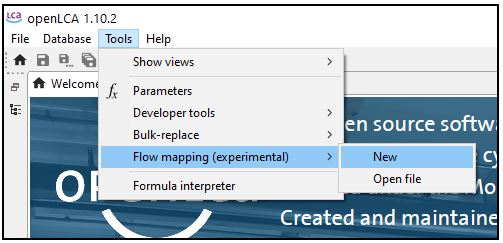Since the release of openLCA v 1.10, a Flow Mapping feature is available in openLCA – some users might have observed it already. In collaboration with ERG and U.S. EPA, we have now released a document with detailed instructions which explain how to use this feature.
Flow Mapping describes the process of converting one flow into another flow. This procedure can be performed so far only for elementary flows. The Flow Mapping feature in openLCA allows users to convert elementary flows within existing databases to user-specified elementary flows embedded in a user-provided dataset. Conversion of a flow automatically replaces all instances of the flow in the openLCA database, such as in processes and LCIA methods.
The feature is helpful for users who aim to combine one or more datasets/databases, which are not consistent in their nomenclature before. Such consistency allows for interoperability between life cycle inventory processes and life cycle impact assessment methods. It avoids double presence of elementary flows, and therefore prevents lack of consideration of flows during the impact assessment.
The Flow Mapping feature can be applied just before a database´s import, or when an import has already been finished. Furthermore, the user has two options for flow conversion, one by using an existing mapping, and the other through creation of a new mapping. Both options are described in detail in the documentation.

